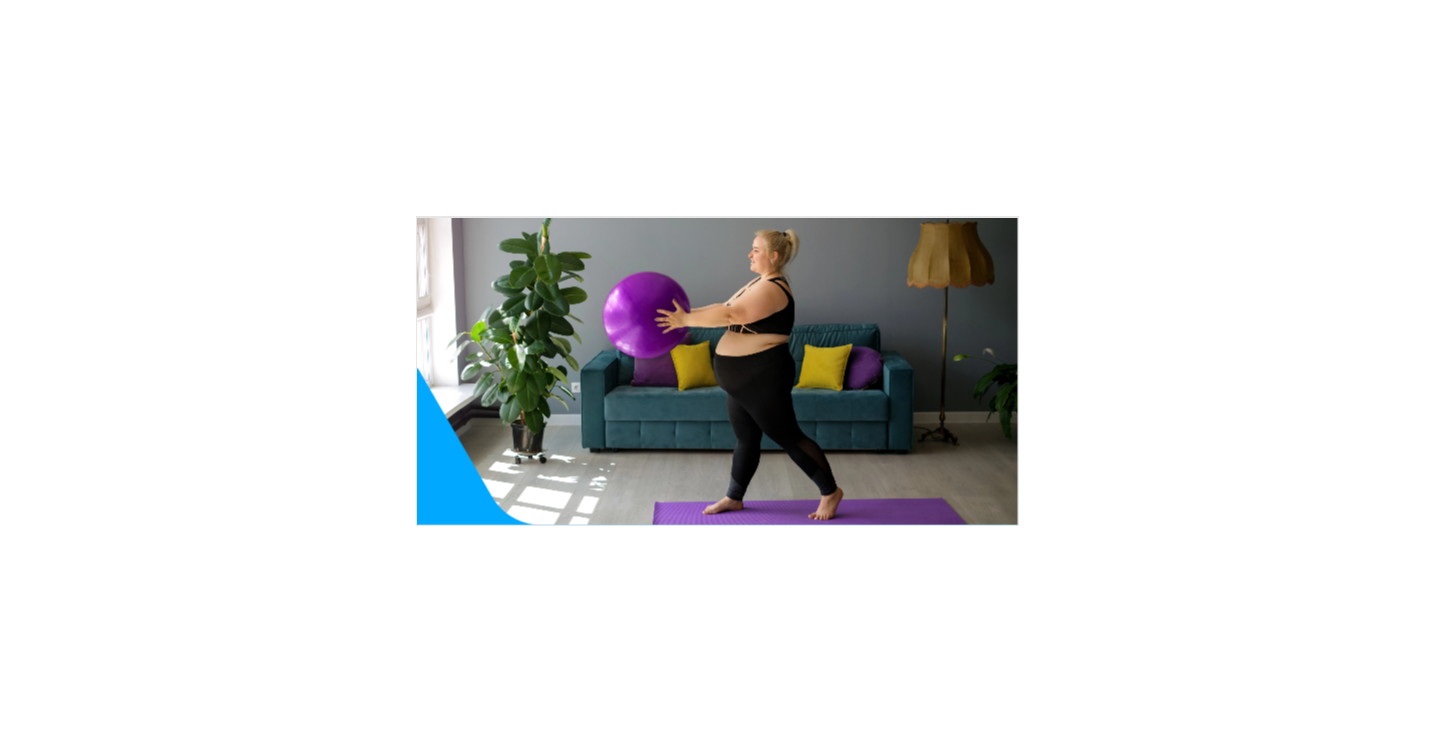Points to Consider:
Before you start a prenatal exercise routine, speak with your doctor to ensure any exercise you plan on doing is safe for you and your baby. Take it easy; listen to your body and to your doctor. In addition, here are some general recommendations about exercising during pregnancy:
- Try to exercise regularly; aim to get 150 minutes of moderate-intensity aerobic activity every week
- Drink plenty of water before, during and after exercise to stay hydrated
- Avoid exercising on your back, which may cause the uterus to press on a large vein that returns blood to the heart
- Keep cool; avoid activities that cause you to become overheated, especially during the first trimester
- Be gentle with your body; engage in low impact activity and avoid exercises that involve jerking or bouncing
- Stay away from all exercises that may cause you to lose your balance or injure your stomach
- Choose a sustainable exercise routine that you like; happiness and healthiness go hand-in-hand
Monitor Your Nutrition
Get the most out of your prenatal exercise routine by focusing on nutrition. Canada’s Food Guide offers helpful recommendations for healthy eating during pregnancy. Eating healthy foods can help provide you with the strength and energy you need to exercise during pregnancy.
Safe Pregnancy Exercises
What exercises are safe during pregnancy? In general, low impact exercises that strengthen and stretch your muscles are a safe bet. However, if you like activities such as jogging or racquetball, you don’t necessarily need to stop during pregnancy; just be sure to ask your doctor before continuing with any of your usual exercises.
Below, we’ve listed some popular prenatal exercises. Consider including these exercises in your routine:5
Walking
An ideal low impact activity, walking keeps you active, strengthens your muscles and is easy on your joints.
Swimming/Water Aerobics
Offering many of the same benefits as walking, swimming is a full body workout. It also supports your weight to help you avoid injury and strain.
Stationary Bicycling
Stationary bicycling offers many of the same benefits of regular bicycling, with less risk of falling or losing your balance.
Yoga
Yoga can help reduce stress, improve flexibility and increase core strength. Consider making yoga or a modified pilates routine a part of your exercise regimen; avoid any positions or exercises that cause discomfort.
Other Exercises to Try
In addition to the workouts listed above, there are other exercises you can incorporate into your routine. Explore some of these additional exercises below:
Pelvic Tilt
Great for making your stomach muscles stronger and your back muscles more flexible, pelvic tilts help to reduce backache and ease delivery. Get on your hands and knees, keeping your head level with your back. Pull in your stomach, pushing up with your back like you're making a camel hump. Hold it for a few seconds and then relax, without letting your stomach muscles sag. Repeat 3 to 5 times, building to 10 repetitions.
Kegel Exercises
Kegel exercises, also known as pelvic floor exercises, strengthen your pelvic muscles. Kegel exercises help strengthen the pelvic floor muscles and help improve bladder control. Pretend you're trying to stop yourself from urinating by tightening the muscles around the vagina and rectum. Hold for 5 seconds, then relax. Repeat 4 to 5 times in a row. You can even do Kegels while working at your desk or watching TV.
Tailor Sitting
These stretch the muscles in your inner thigh, back and pelvis, to help with delivery. Sit on the floor, bend your legs and put the soles of your feet together. Let your knees relax and drop toward the floor. Then bring your feet close in to your body. If you're not that limber yet, just cross one leg in front of the other. Try sitting in this position a few times a day.
Stretching Exercises
Stretching exercises can improve flexibility and help alleviate any discomfort you’re noticing in your muscles. Try exercises such as neck rotation, shoulder rotations and ankle rotations to help you loosen up your joints. However, it is important to note that pregnant women are at a slightly higher risk of ligament sprains. The pregnancy hormone relaxin, allows a woman’s belly to grow large and round. This same hormone allows other structures to stretch more than they normally would. Avoid aggressive stretching and if you’re not sure what stretching exercises you can do, consult your doctor for recommendations. He or she may suggest prenatal yoga—which incorporates a variety of stretches—as a starting point.
When to Stop Exercising:
Sometimes, exercise during pregnancy isn’t safe. Be aware of pregnancy exercise warning signs. If you notice any of these warning signs, stop exercising immediately and contact your doctor:
- Abdominal, chest or pelvic pain
- You feel faint, dizzy or light-headed
- Vaginal bleeding
- Sudden absence of fetal movement
- Gush of fluid from the vagina or a trickle of fluid that leaks steadily
- Irregular or rapid heartbeat
- Sudden swelling in your ankles, hands, face or experience calf pain
- Increased shortness of breath
- Persistent contractions that continue after rest
Thanks for reading our article about exercising during pregnancy. Learn more about your pregnancy today.





